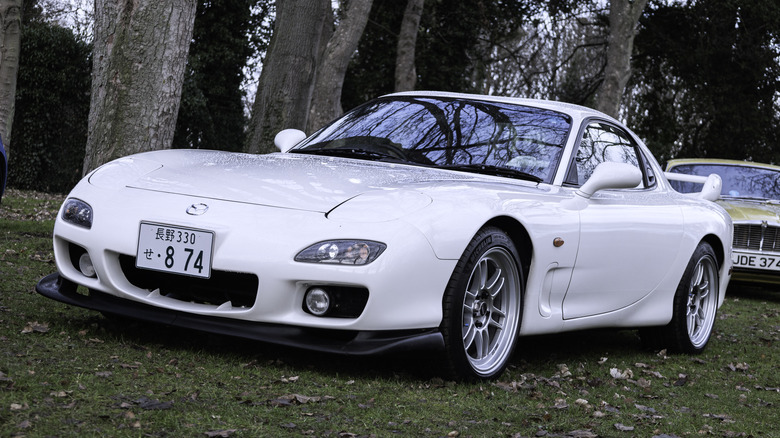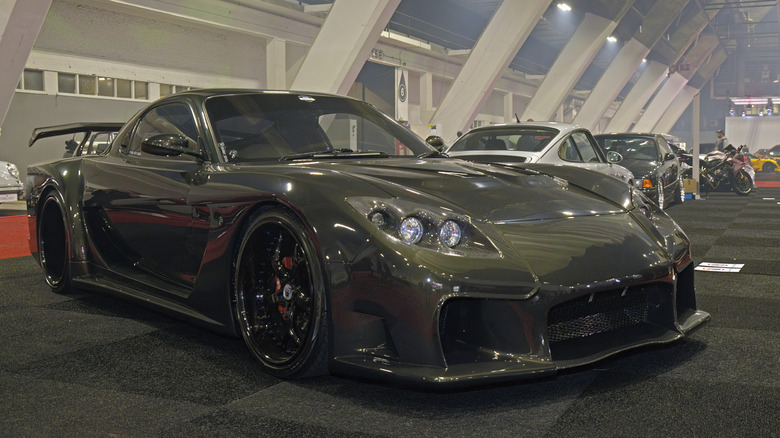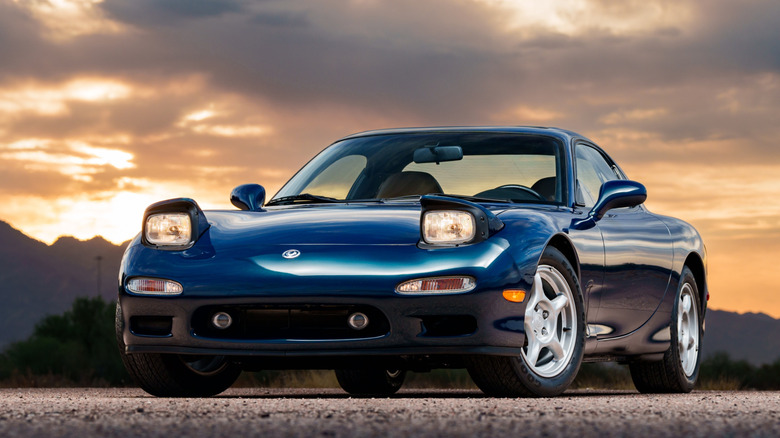The Mazda RX-7 Is Banned In The USA, But Only Some Model Years
The Mazda RX-7 is one of the most iconic cars in JDM history. While it is not universally banned in the United States, model years after 1995 definitely faced restrictions. This came down to a simple rule change: the U.S. required all new cars starting in 1996 to have OBD2 (On-Board Diagnostics) systems for standardized emissions control and engine monitoring. The RX-7's third-generation FD model was never upgraded from OBD1 to OBD2.
Mazda decided it wasn't worth the cost to adapt the low-volume, high-priced RX-7 to new regulations. Instead of re-engineering the car for America, Mazda pulled it from U.S. dealerships after the 1995 model year. Meanwhile, RX-7 production continued in Japan until 2002. Those Japan-only models, including famous variants like the Spirit R, were never made to U.S. emissions and safety standards. As a result, they're considered non-compliant and impossible to register unless imported under specific exemptions. Technically, the post-1995 RX-7s aren't banned because they're fast, dangerous, or right-hand drive. They simply didn't meet American federal rules at the time, and no one went back to fix that gap.
Confusion about the RX-7's unavailability in the U.S.
Production of the FD RX-7 in Japan ran from 1992 to 2002, while United States buyers only got the model from 1993 to 1995. After 1995, Mazda kept refining the FD for its home market, producing multiple limited-edition variants like the Bathurst R and the Spirit R (one of the fastest Mazda cars ever made). Unfortunately, because they were never sold new in the U.S., they weren't made to conform to American crash safety and emissions control regulations, including the inclusion of the all-important OBD2 diagnostics port.
Adding to the confusion, one Mazda dealership's blog incorrectly claimed the RX-7 was banned for being left-hand drive, which makes no sense. American cars are left-hand drive by default. In reality, it's post-1995 RX-7s that are customarily right-hand drive, since they were only built for Japan. It's a lack of regulatory approval that kept them off American roads until they qualified for import exemptions.
How the 25-year rule makes some RX-7s legal again
The National Highway Traffic Safety Administration (NHTSA) has a "25-Year Rule" that allows enthusiasts to legally import cars that never met U.S. standards once they're old enough. For example, that means any car built in 2000 or earlier became eligible for import in 2025.
Under the 25-year rule, you don't have to retrofit an imported RX-7 with OBD2 or submit it to crash testing; it gets in based on age alone. Earlier U.S.-market FDs (1993–1995) are legal with no extra paperwork beyond normal titling, registration, and insurance processes. But if you're hunting for a rare JDM Bathurst R or Spirit R, you need to make sure it's at least 25 years old before you bring it over. Otherwise, you're risking seizure at the port or years of storage purgatory.
The Mazda RX-7 was never actually banned for being too fast or exotic. It simply missed a compliance deadline, and Mazda chose not to adapt it. Now, thanks to the 25-year rule, the best versions are finally becoming legally available for American enthusiasts who've been waiting decades. Before you decide to buy one, here are a few things you should know about the RX-7's rotary engine.


